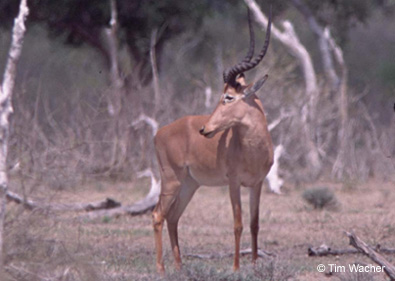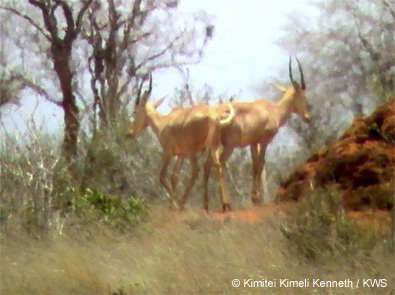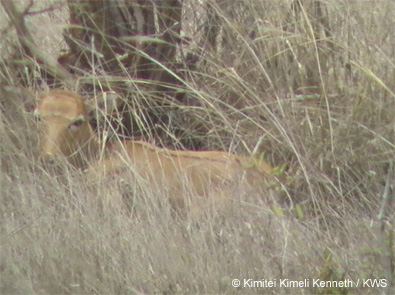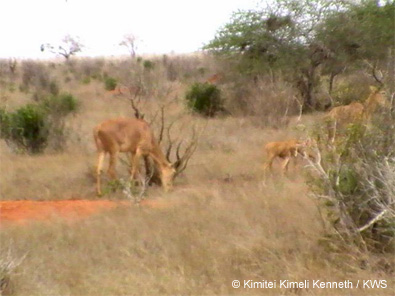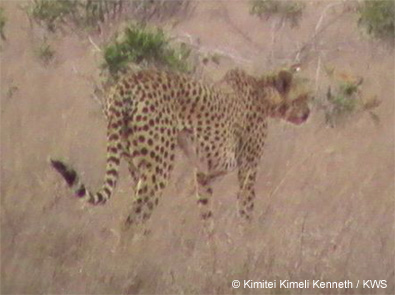Kimitei, our Kenyan EDGE Fellow studying Africa’s most endangered antelope – the hirola, has sent us the following update on his recent findings:
Click here to read Kimitei’s previous blog.
Hirola searching for the last three weeks was done with no consistency. The first week we did not attend the hirola range. When we visited the area in the second week, we had to confirm the already identified groups and their whereabouts. It was regrettable that the bachelor herd group (AB), Satao group (SAT) and Dika Plains group (DP) were not sighted.
During that week, we were lucky to sight the Mukwaju 2 group (M2) with only five members – all females (2 adults (pregnant) and 3 yearlings). The other members (9) were not sighted (Adult male, 7 adult females and a yearling female). The cause of the split cannot be accounted.
The third week, we were very eager to see what had happened to the groups but unfortunately no group was sighted in the first day. This might be due to the hot sun that Tsavo has experienced for the last few days. This hot condition usually ushers in the start of rains. As per now, the area is dry and hot that animals cannot risk the open areas but seek refuge under shrubs and trees especially Accacia spp. Delonix spp. and Boscia spp. that are present in the area. Other water dependent species have migrated to permanent water bodies.
The second day came in with much success, early in the morning we sighted a lion within the hirola range despite its perfect camouflage to the dry grass. After thorough morning combing the bushes, we had no success. It was past noon that we had almost lost hope out on the bushes that we decided to search them along the park roads (mostly found close to roads especially for the sightings we had made so far) adjacent to the former sightings.
Thanks. We sighted 3 hirola within a herd of grants gazelles. They were all yearling females. On close assessment using the horn structure and body size they were of the M2 group.
We gained hope and searched for the other part of the group. Less than 2 km from the three hirola, we sighted the other members (11) of M2. The sun was hot and they were underneath Acacia tortilis. On moving close to them, we saw four calves lying. We could also identify the mothers. Three calves were less than 1-week old while the other was 2 weeks old. They were healthy and strong.
The other five adult females were gravid and could give birth soon, maybe before the rains come. The yearling female was stable. The adult male was relaxed with most of the time nosing the yearling female with no signs of mating.
Three kilometers from where the group was, we sighted a male cheetah. The cheetah had made an impala kill the previous day but this was snatched out from him by vultures. This cheetah might be a threat to the calves and even the other hirola. Rain showers have been experienced in the area and food will not be a problem, but my fear is next week is too far that I cannot predict what will happen to the hirola calves considering the male cheetah is close to them and even was moving in the direction where the calves were seen.
If you would like to support the important conservation work of Kimitei, or other EDGE Fellows, please become an EDGE Champion, or donate here.
